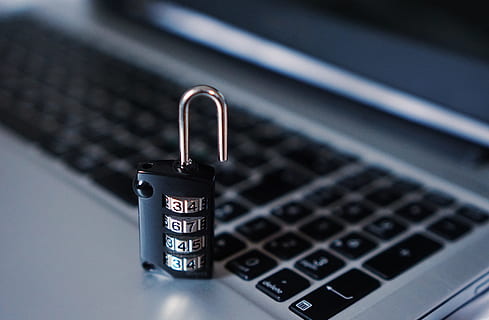Have you ever been in the middle of typing and then realized that your keyboard is locked? It can be a frustrating experience, especially if you don’t know how to unlock it.
In this blog post, we will explore how to unlock keyboard on dell laptop. We will also provide some troubleshooting tips in case you are still having difficulties. By the end of this post, you should be able to confidently unlock your keyboard and get back to work.
How to Unlock Keyboard on Dell Laptop?

If your keyboard is locked, you will need to unlock it before you can use it. There are a few different ways to do this, depending on the model of your Dell laptop.
One way to unlock your keyboard is to hold down the Fn key and then press the Num Lock key. This should toggle the lock on your keyboard, allowing you to use it normally.
Another way to unlock your keyboard is to go into the BIOS settings and disable the hotkey mode. This can be done by pressing F2 when you boot up your laptop. Once in the BIOS menu, navigate to the System Configuration tab and then look for the option to disable hotkey mode. Save your changes and exit the BIOS menu, and your keyboard should now be unlocked.
If neither of these methods works, you may need to physically unlock your keyboard by moving a switch on the underside of your laptop. Consult your laptop’s manual for more instructions on how to do this.
How to Fix a Locked Keyboard on Dell Laptop?

If your Dell laptop keyboard is locked, there are a few things you can try to fix it. First, make sure the keyboard is turned on. If it is, then unplug the laptop from any power source and remove the battery. Press and hold the power button for 30 seconds to release any residual charge in the system. Once that’s done, reinsert the battery and plug the laptop back in. Try pressing the keys again to see if they work.
If that doesn’t work, then you may need to replace the keyboard. To do this, you’ll need to purchase a new keyboard and follow the instructions in your Dell laptop’s manual on how to replace it.
How to Change the Keyboard Settings on Dell Laptop?

Dell laptops come with a variety of keyboard settings that you can customize to your liking. To change the keyboard settings on your Dell laptop, follow these steps:
1. Open the Control Panel.
2. Click on Hardware and Sound.
3. Under Devices and Printers, click on Mouse and Keyboard Center.
4. Select Change keyboard settings from the options listed on the left-hand side of the window.
5. In the Key Settings tab, you can change various aspects of your keyboard, such as the repeat delay, cursor blink rate, and more.
6. When you’re finished making changes, click Apply to save them.
How to Use an External Keyboard with Dell Laptop?

If your Dell laptop is having issues with the built-in keyboard, you may need to use an external keyboard as a temporary workaround. Here’s how to connect and use an external keyboard with your Dell laptop:
1. Plug the external keyboard into one of the USB ports on your Dell laptop.
2. Once the keyboard is plugged in, you may need to press a key on it to wake it up.
3. Once the external keyboard is awake, you can use it just like you would the built-in keyboard on your Dell laptop. Simply start typing away!
4. When you’re done using the external keyboard, simply unplug it from the USB port and put it away until you next need it.
Conclusion
If your keyboard is locked on your Dell laptop, there are a few possible reasons why. It could be that the NumLock or CapsLock key is turned on, or it could be that the function keys are locked. Whatever the reason, it’s easy to fix — simply press the Fn + Esc keys to unlock your keyboard. If that doesn’t work, you can also try restarting your laptop. We hope this article has helped you figure out how to unlock your keyboard on a Dell laptop.
FAQs
Why is my Dell keyboard not typing?
The Dell keyboard may not be typing due to a software glitch, hardware issue, or because it’s locked. Troubleshooting can include restarting the system, checking for driver updates, or verifying if the keyboard lock function has been accidentally activated.
How do I enable my keyboard on my Dell laptop?
To enable your keyboard on a Dell laptop, press the ‘Fn’ key along with the ‘Num Lock’ key. This combination usually toggles the keyboard lock and should allow you to type normally again.
How do I turn off the lock on my Dell keyboard?
To turn off the lock on your Dell keyboard, you can usually hit the ‘Scroll Lock’ key. If this doesn’t work, try pressing the ‘Fn’ key and ‘Num Lock’ key together again.
How do I unlock the keyboard button on my laptop?
To unlock the keyboard button on your laptop, you typically need to press the ‘Fn’ key along with the ‘F’ key that has a keyboard symbol. If this doesn’t work, consult your laptop’s user manual or seek technical support.
Can you accidentally lock your keyboard?
Yes, it’s possible to accidentally lock your keyboard. This usually occurs if you inadvertently press certain key combinations like ‘Fn’ + ‘Num Lock’, or if the keyboard settings in your operating system get altered unintentionally.


